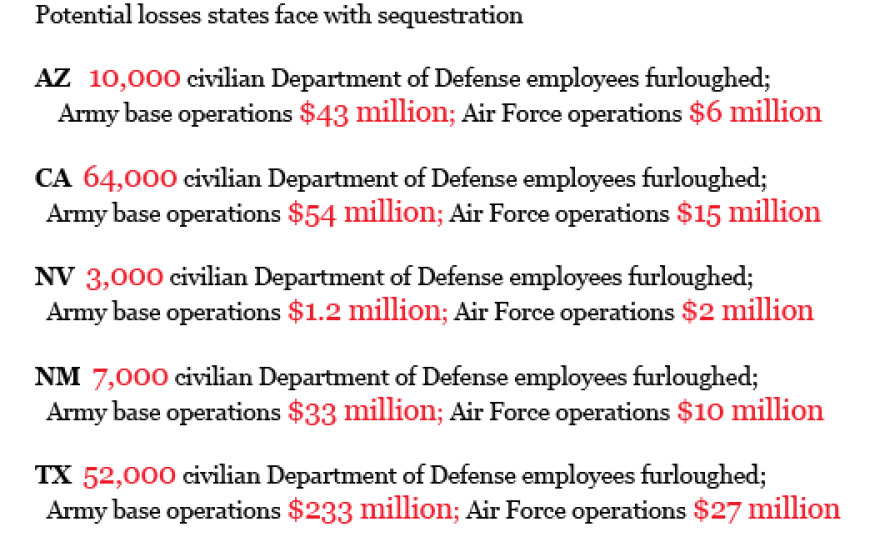Unless action is taken, the once vague threat of sequestration — a broad $85 billion series of federal spending cuts— which was posed as a fierce incentive to get the stalemate congress moving, will become reality. The countdown ends Thursday at midnight.
If sequestration starts Friday morning, what would that look like across the Southwest?
The largest state in nation, California stands to lose $87.6 million in primary and secondary education funding — jeopardizing 1,210 teacher and aide jobs.
Indian Health Service, tribal hospitals and clinics would be forced to cut 3,000 inpatient admissions and 800,000 outpatient visits annually.
National Congress of American Indians President Jefferson Keel said, "It will affect whether or not a young mother may or may not be able to access health care for her unborn child, whether or not elderly people will be able to afford their medications or afford to go to the doctor. It will affect human lives all the way down to the community level."
The state of New Mexico will be hit hard by sequestration. The state’s largest employer is Los Alamos National Laboratory, a federally funded nuclear research facility.
With around 49,000 federal employees in the state, one economist says New Mexico has twice the national average. New Mexico stands to possibly lose 20,000 jobs in the next two years.
In Texas, 52,000 civilian Department of Defense employees will be furloughed

National park visitors brought in $30.1 billion to parks and nearby hotels and restaurants. As the parks gear up for their busiest time of the year, they prepare for sequestration — shorter seasons, closed campgrounds and hiking trails.
They also face a cut in seasonal employees.
"Many of them are returning seasonals that have extraordinary skills in firefighting and search and rescue and river running," says Jonathan Jarvis, National Park Service Director.
Sequestration will also impact major gateway airports, and average wait times could increase by 30-50 percent. At the nation’s busiest airports, peak wait times could grow to more than four hours.
Wait times along the border would increase as well. Kevin McAleenan, the Acting Assistant Commissioner for U.S. Customs, said “It would be about 2,750 officers cut, about 12.5 percent of our staff. The ports of entry would have significant impact on wait times and our ability to move people and things through the border."







